Celtic are enjoying what looks like will be yet another successful title defence in the Scottish Premiership. They lead the title race with 11 games to go in the season, after earlier disappointment in the UEFA Champions League after coming bottom of a group containing heavy favourites Real Madrid and RB Leipzig as well as Shakhtar Donetsk.
In what has been a dominant season for the Hoops, one underrated aspect of their play has been their ability to win crucial points through set plays. Celtic have scored 19 goals from set-pieces this season, with corner goals leading to Celtic having gained an additional 10 points. With Celtic leading Rangers in the title race by 9 points, it is clear that these corner goals have been crucial to their ability to gain some breathing room at the top of the table.
Gavin Strachan, son of ex-Celtic manager Gordon Strachan who led them to numerous title victories, has been publicly acknowledged by current head coach Ange Postecoglou for the positive upturn in form Celtic have achieved during set pieces.
In this tactical analysis, we will delve into the tactics used by Celtic, with an in-depth analysis of how they have been able to continuously alter their routines whilst still achieving success. This set-piece analysis will look at the reasons behind the different routines used depending on the opposition team’s defensive set-up.
Attacking space around the six-yard box
Celtic have used two main different methods of attacking corners, depending on the set-up of the defensive team. Against man-marking defensive approaches, space nearer the goal has been easier to manipulate and expose due to the defensive players being more adventurous in their hunt to track their markers.
Against these man-marking setups, space is available around the six-yard line as every player attacking the ball starting around the penalty spot is closely marked. The image below displays the clear space inside the six-yard box, with the out-swinging being played into the space. With the ball curling away from the goal, the goalkeeper has a harder time deciding whether to claim the cross, meaning they are more likely to stay on their line and allow the ball to enter the area. With the ball just needing a precise delivery into an already open space, all that’s needed is to get to the target area first.
To get into the target area ahead of a defender, the Celtic attackers must be able to dismark themselves in order to get an unopposed run at the ball. In the example below, this is done through a simple body feint, where the attacker can create space to sprint into, before putting a free unopposed header into the back of the net from within six yards.
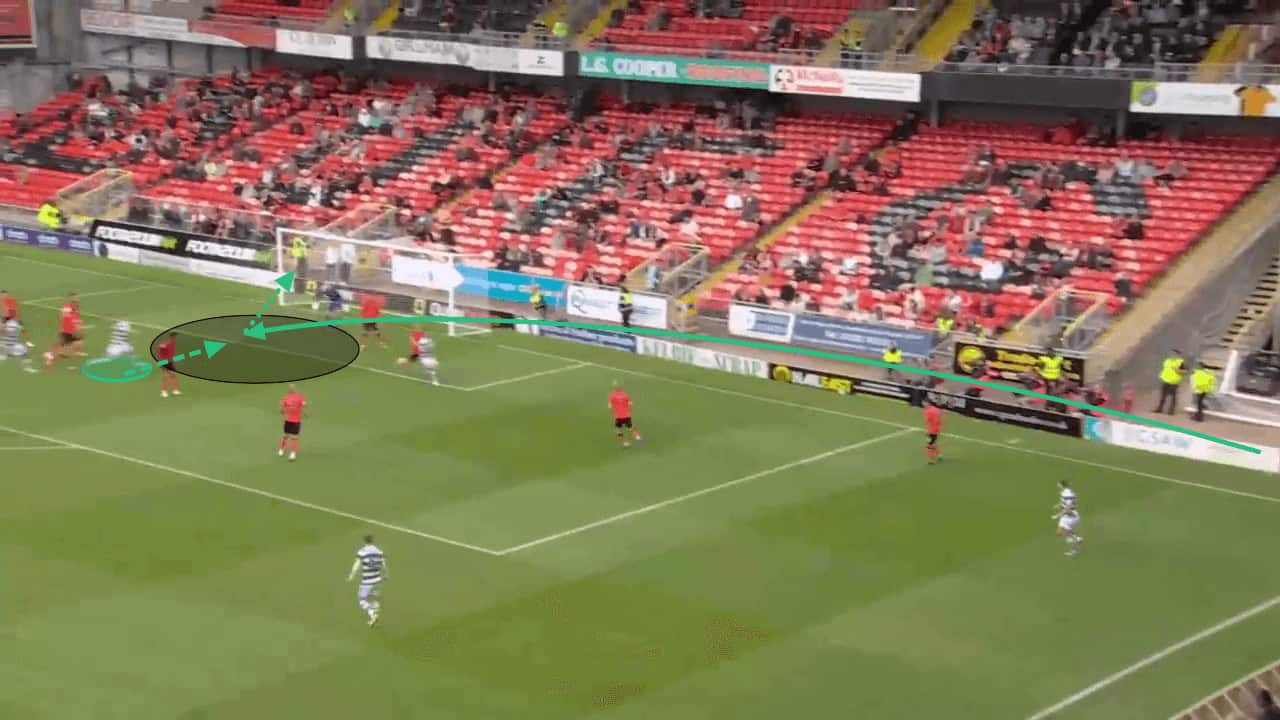
Celtic have been innovative in creating space around the six-yard box when there are additional zonal markers. Pictured below in blue, the Celtic player moves into the line of sight of the defender to capture his attention, before making a movement away from the target area, with the intention of dragging the defender away from the six-yard box. This decoy run allows the real target player (green) to arrive in the target area with no defenders occupying that zone.
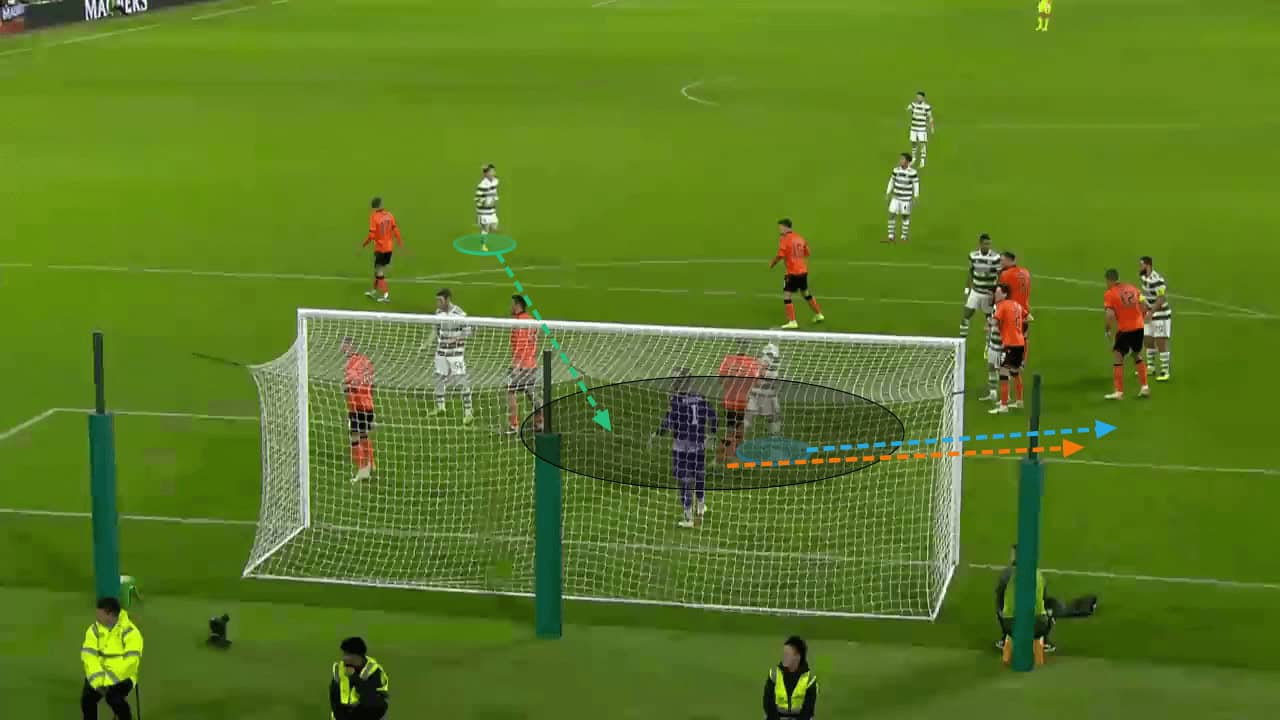
We can see in the picture below, Kyogo Furuhashi attacking the six-yard box from deep. This allows him to enter the box unmarked with it becoming impossible for defenders to pick him up once he builds up momentum. The image also displays the horizontal separation the attacker at the front post has achieved, allowing him to control the space in front of the six-yard area.
The intention behind attacking a certain zone, even if it means moving away from the goal, is that should the ball go into that specific zone, the attacker will be able to make the first contact even if it doesn’t drop on their head. This means that as long as the ball lands anywhere in front of the six-yard box, the Celtic attacker will be able to react and reach it first.
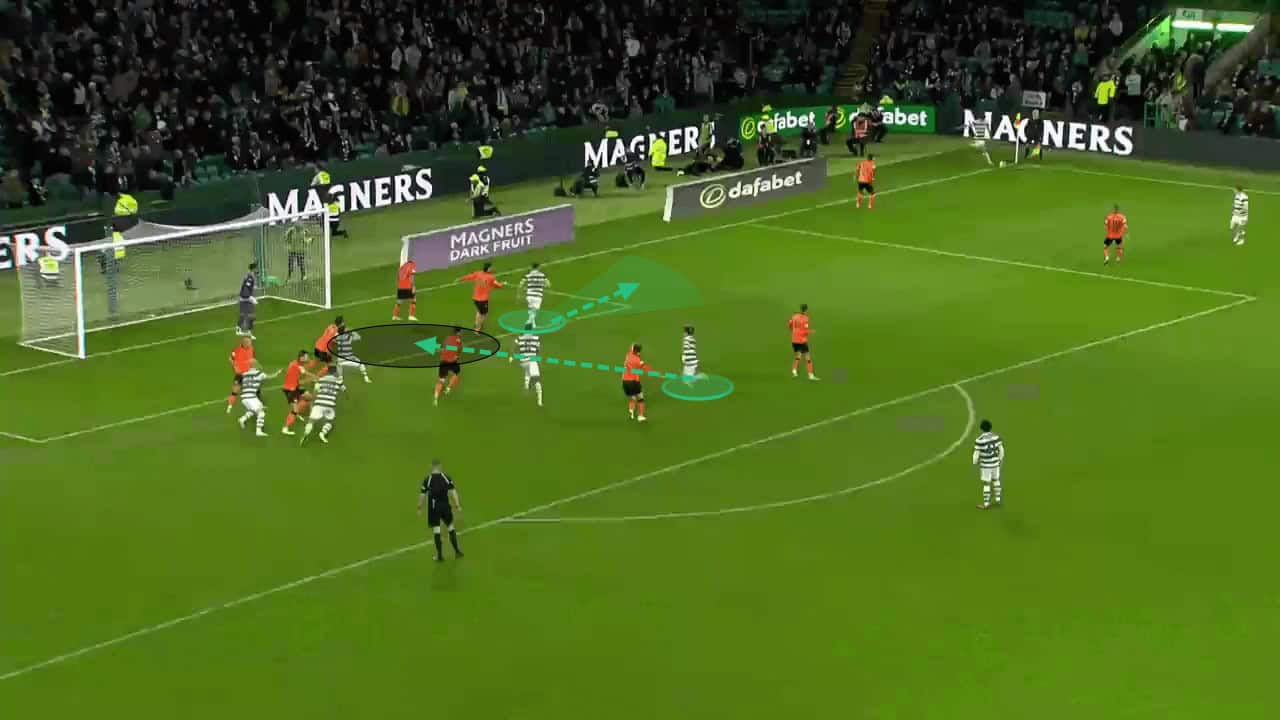
We see in the image below that the player ahead of the six-yard box has plenty of space around him to perfectly flick the ball into the six-yard box from where Furuhashi is waiting to receive the ball without any Dundee defenders marking him. As he attacks the ball with speed, the header from Furuhashi has plenty of pace on it, meaning that it becomes extremely difficult to react to from such a short range from goal.
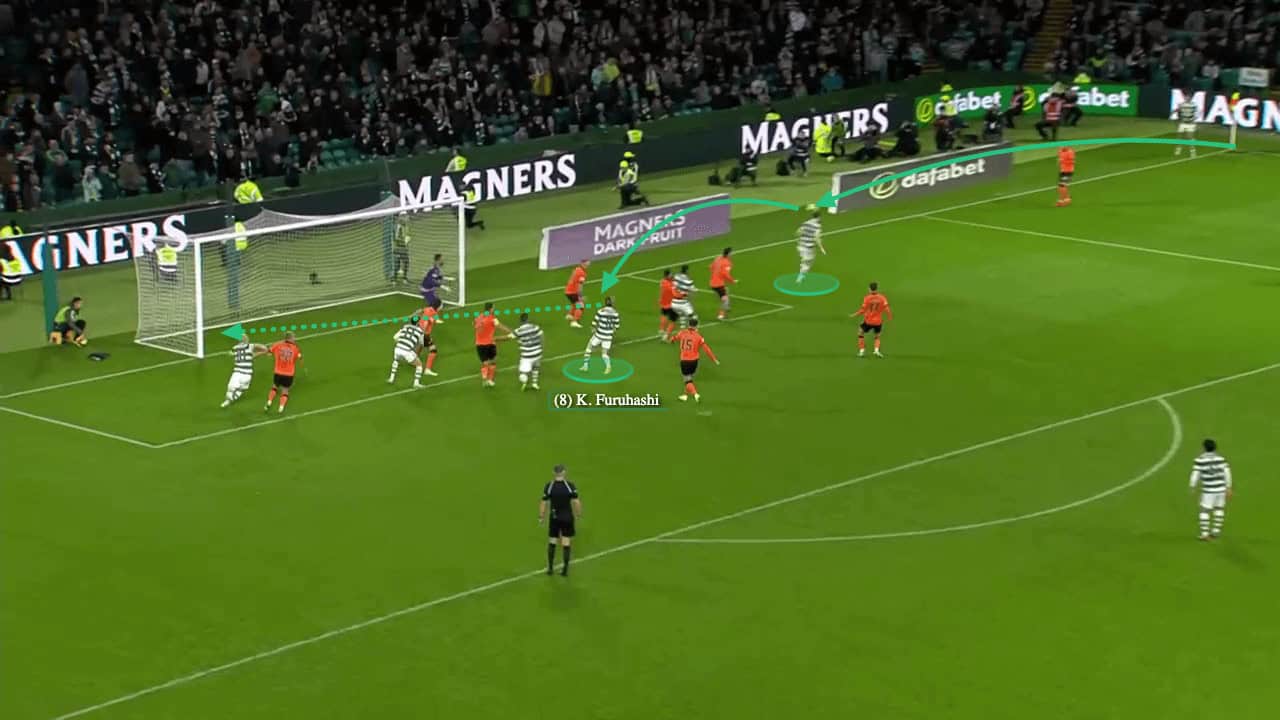
One final way in which Celtic have exposed spaces around the six-yard box is through the blocking of defending players’ paths to the ball. This is a similar idea to screening, where an attacker prevents the defender from reaching the ball. However, the difference lies in the fact that the attacker still moves towards the ball, turning into a moving screen where the defender has to evade the block in order to reach the ball.
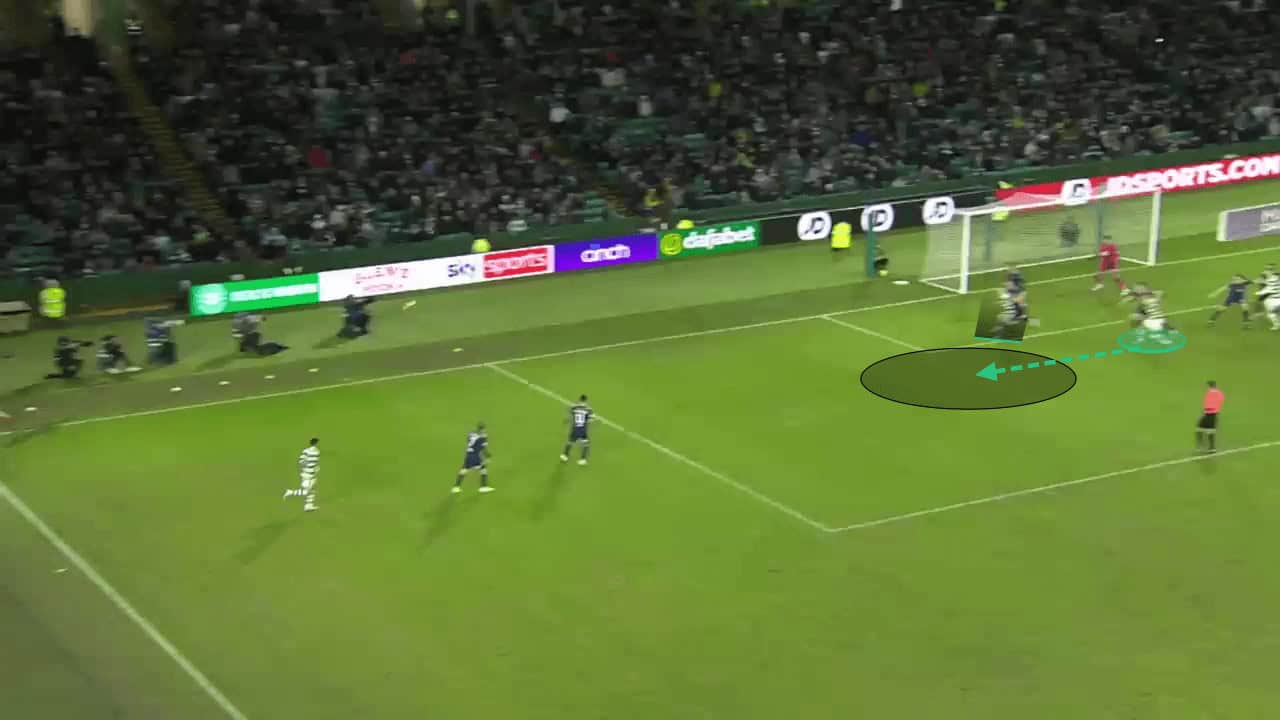
As a result, the space at the front corner of the six-yard box is left open, allowing the Celtic player to attack the ball with ease. The above diagram also displays the horizontal separation Celtic have, allowing them to make the first contact with the ball. In these kinds of cases, the intention is never to direct a header goalward but to make the first contact to redirect the ball into a more threatening position for a teammate to attack.
We can see below how the flick-on is directed towards the back post with one of the Celtic players darting towards the back post, expecting the ball to arrive in his path. The early run at the back post allows the Celtic attackers to arrive there ahead of the defenders, with the defenders getting caught ball-watching as the first flick is attempted.
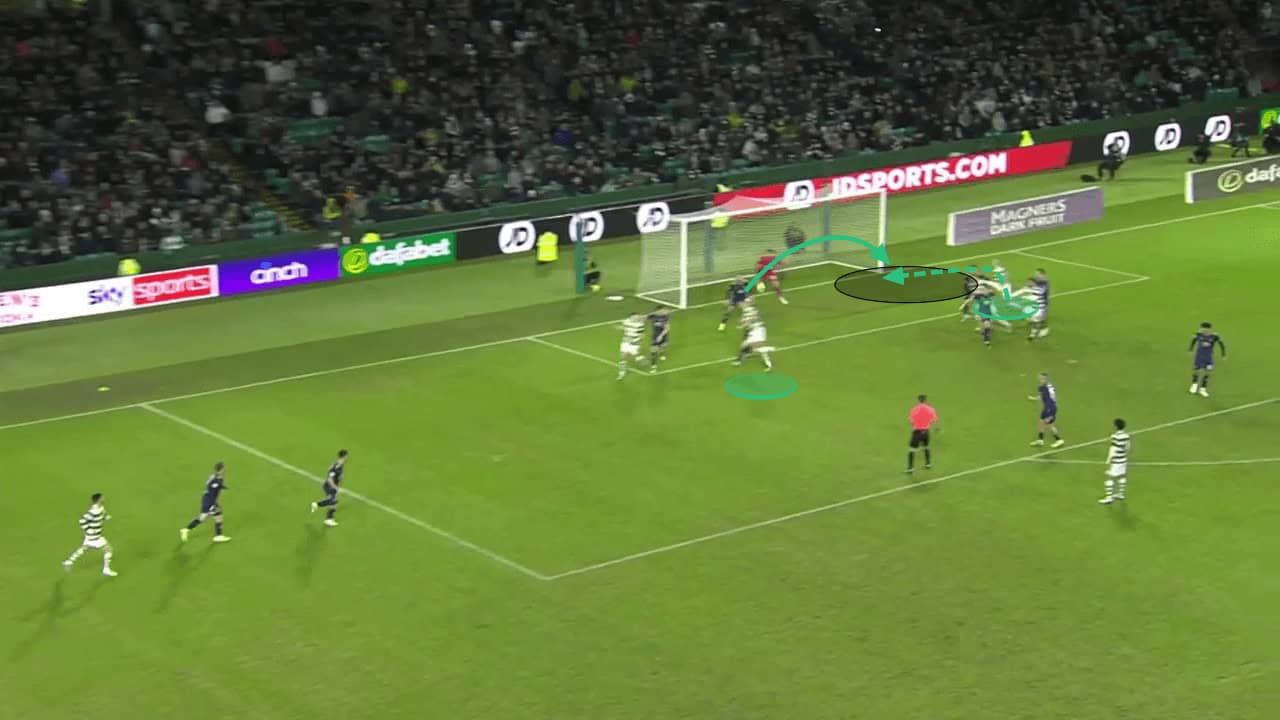
Variations against zonal defences
Against teams who protect the space around the six-yard box zonally, Celtic have been flexible by having the ability to creatively cause opposing teams numerous problems. One way in which Celtic have created chances against zonal defences has been through floated crosses towards the back post.
A floated cross hangs in the air, meaning that attackers have more time to judge the flight before attacking the ball. With the cross heading towards the back post, defender often can’t have both their markers and the ball in their line of sight. The scenario in the example below often happens with the defender turning their back to the ball, focused on not allowing their marker out of sight. As a result, the defender doesn’t know where the ball is and can’t clear the ball, allowing the attacker to make the first contact.
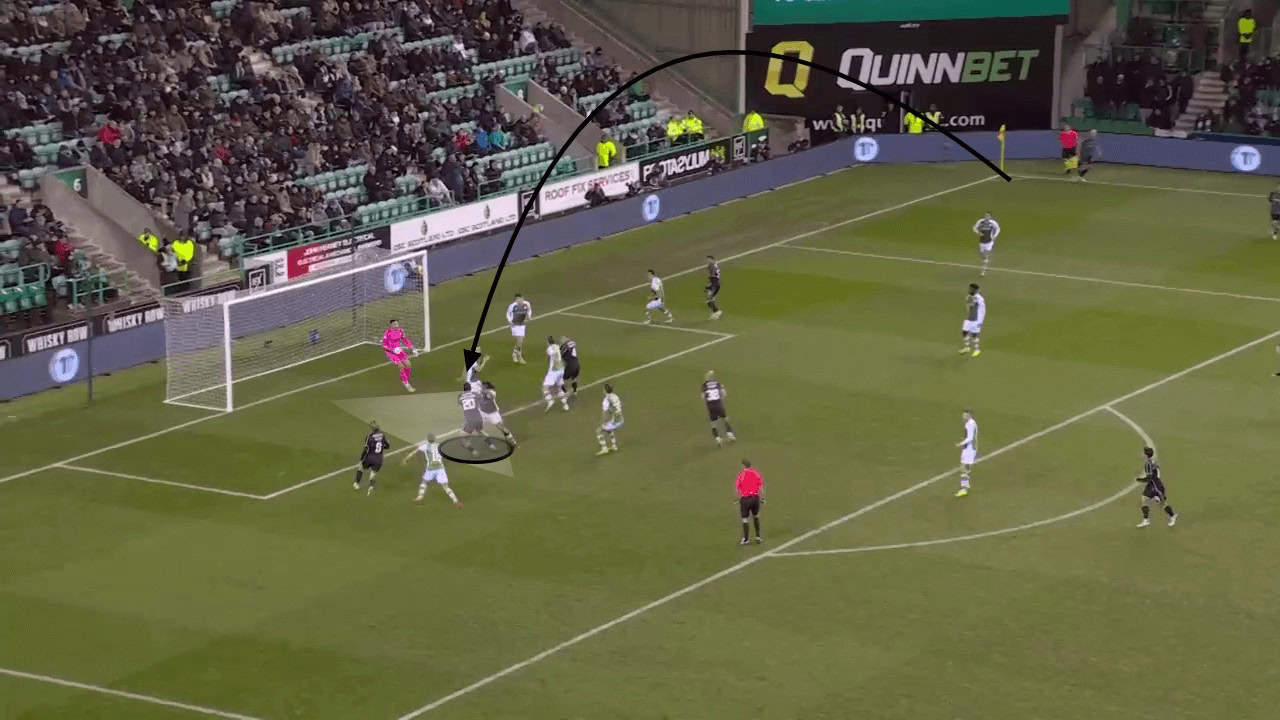
With floated crosses, it can be hard to get enough power on them to beat the keeper, and so Celtic utilise this routine to aim for second balls inside the box from where a teammate can finish the move with a volley of some sort. We can see below, the header is flicked down outside the six-yard box, where three Celtic players are all anticipating the knock-down to slam the ball into the back of the net.
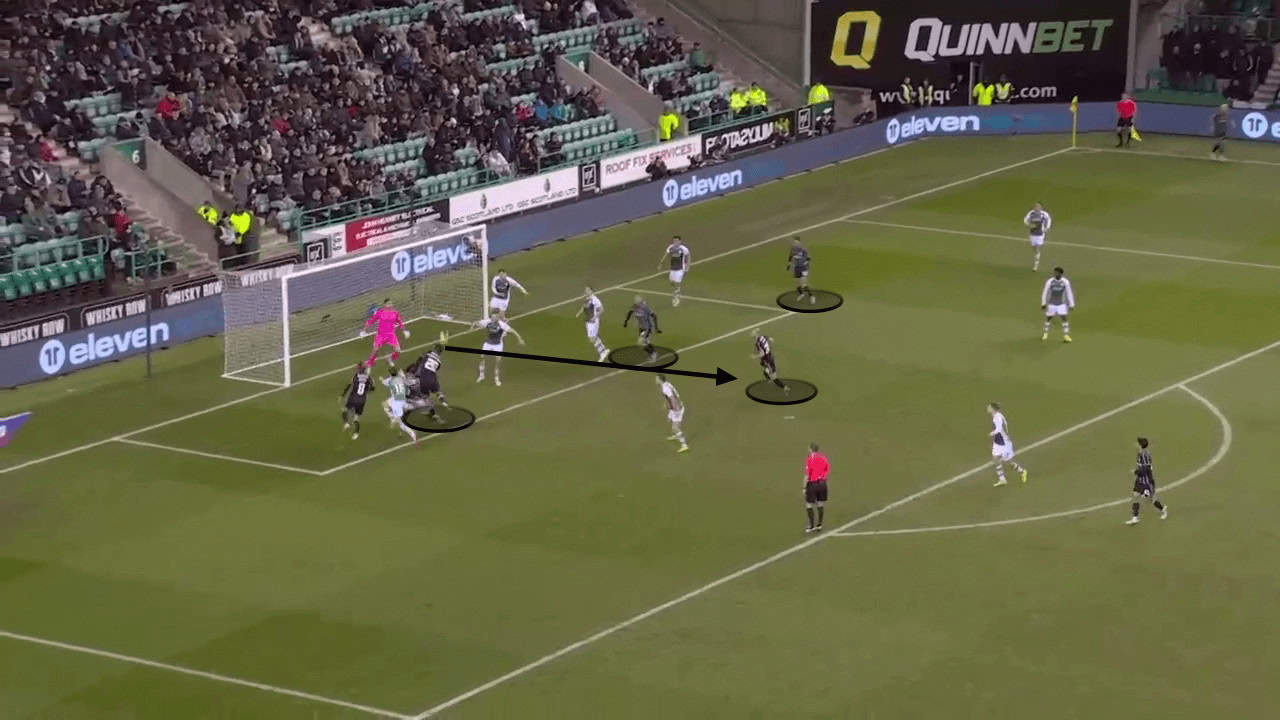
While zonal marking can be solid around the six-yard box, certain teams still vacate the areas at the back of the six-yard box. Celtic have shown their capability to expose any sort of defensive setups. With the free space at the back post, a key to exposing the space is by making sure that space stays unmarked. One way in which this can be made possible is through deceit, by making it seem like there is no intention to attack that area before making a late movement as the ball is crossed in.
We can see in the example below, every player attacks the front of the six-yard box before one player peels around to the back of the six-yard box once all the attention is on the ball. Once everyone has their eyes on the ball, it becomes harder to spot attacking runs, so making one in the blindside of the defence means that you can enter the back of the six-yard box unmarked.
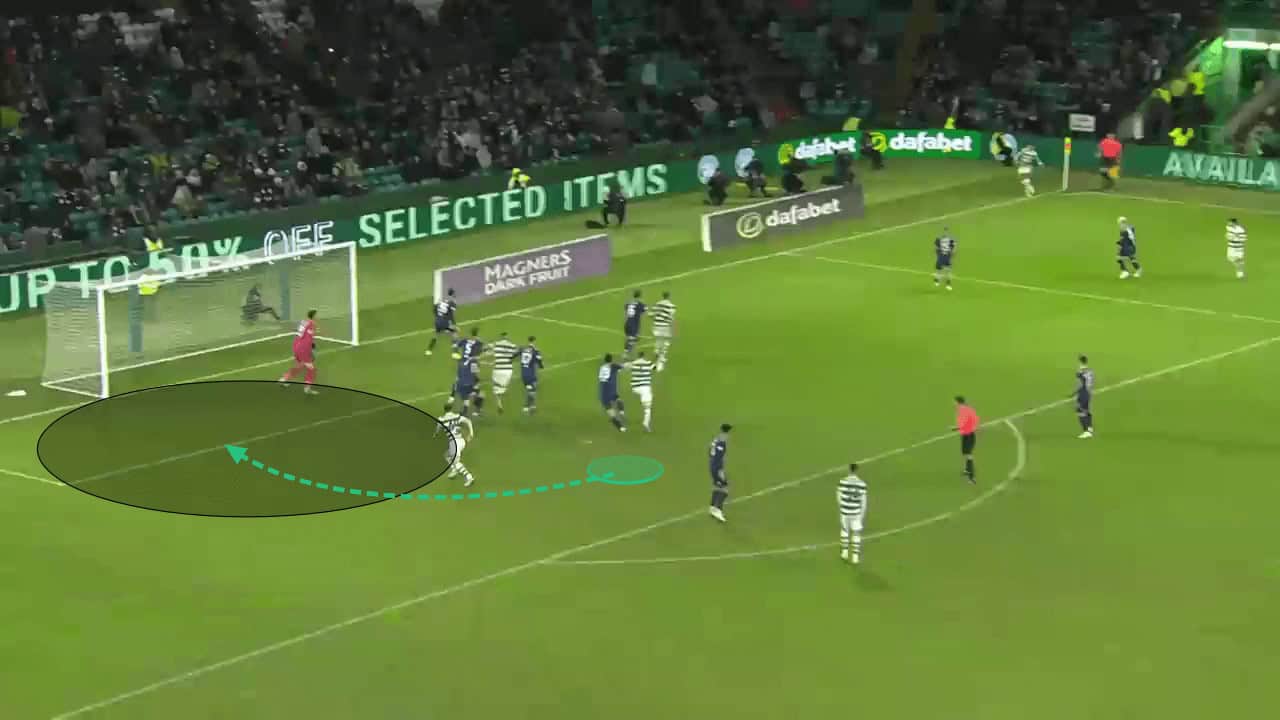
One final way in which Celtic have exposed zonal defensive setups is by creating overloads in certain areas of the box. While the box has some sort of zonal cover all around below, the lack of depth in numbers across the box means that every part of the box is weakly defended. As a result of not enough defensive players back, Celtic are able to create overloads inside the box, with those overloads decreasing the likelihood of the ball being cleared and resulting in a counterattack.
The image below displays the 3v2 overload Celtic have around the back of the six-yard box, resulting in two Celtic players outmuscling a singular Dundee defender for the aerial duel. Dundee are more concerned about the potential counterattack but without adequate defensive numbers, the ball is forced to stay inside the 18-yard box.
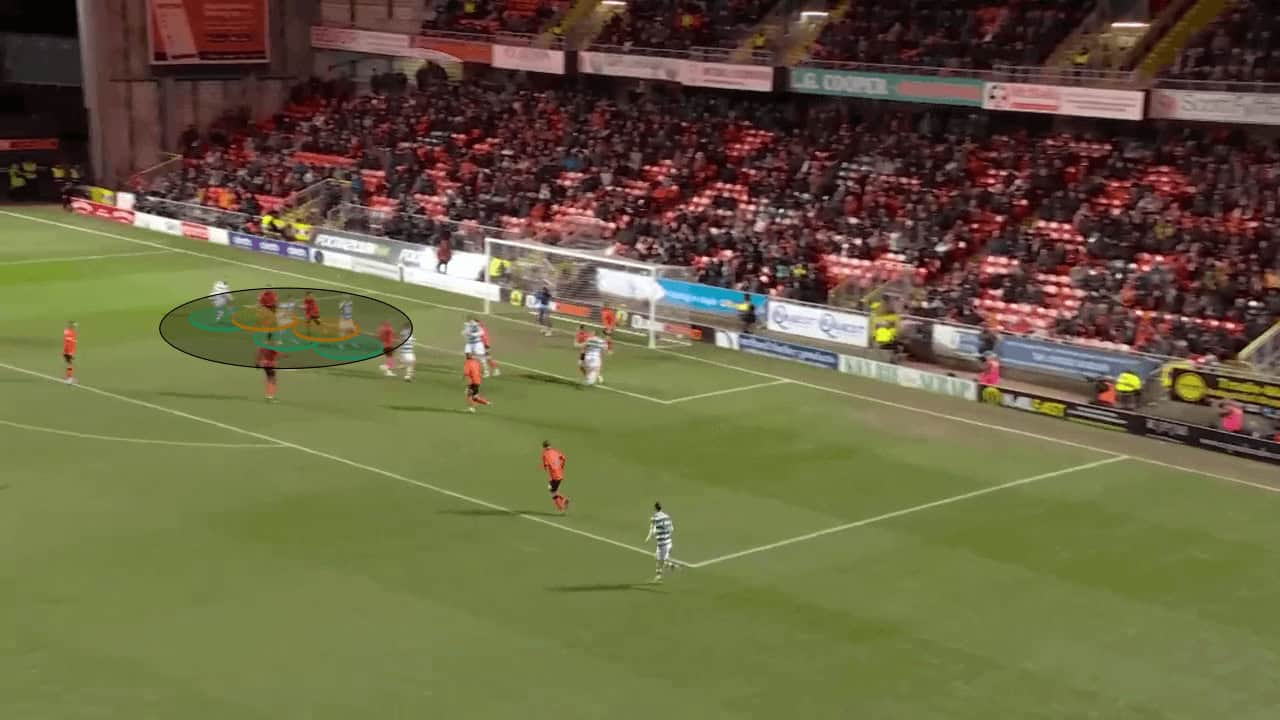
Conclusion
This tactical analysis has displayed the different methods Celtic have utilised to create chance after chance from corners throughout the season. From their exploitation of space against man-marking to their ability to use second balls to capitalise on different zonal setups, Celtic have demonstrated the numerous ways in which they can creatively win points from dead ball scenarios.






Comments